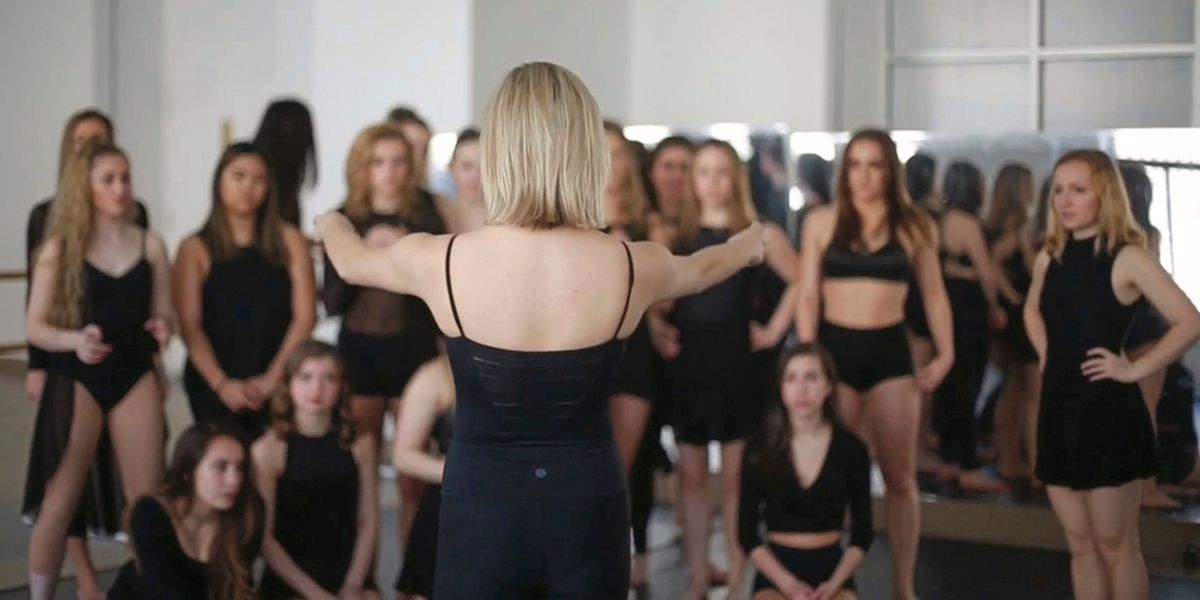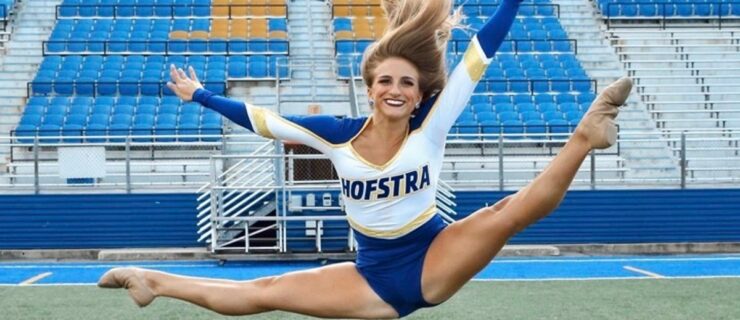3 Strategies to Help Dancers Succeed as Peer Leaders
Do you dream of running your student dance company or becoming captain of your dance team? Are you a triple threat eager to direct your school’s next musical? If you have big ideas and the drive to make them a reality—as well as a strong rapport with your fellow performers—you might be a good fit for a leadership role. But even the most dedicated dancers can stumble during the transition from peer to peer leader. Try these tips to make the most of your tenure at the top.
Know Your Responsibilities
Will you be running rehearsals? Can you offer corrections, or will you simply relay a coach’s notes? Will you have creative input? What administrative tasks will land on your plate? Being aware of what is—and is not—expected of you will help you take initiative without overstepping your bounds.
In some cases, you’ll have a lot of responsibility. As president of Fordham University’s Expressions Dance Alliance, senior Liz Ladley oversees a student executive board that includes a vice president, a secretary, a publicist, a treasurer, and an events coordinator. “It’s my job to make sure everyone else is fulfilling their specific duties,” Ladley says. She also dances and choreographs for the troupe, and coordinates club activities via Fordham’s Office for Student Involvement. While EDA has a faculty adviser, Ladley and her student board control the company’s vision and manage its day-to-day operations.
Elizabeth Furman, a junior theater/technical theater double-major at Cab Calloway School of the Arts in Wilmington, DE, has been both an assistant director of musicals with a teacher directing, and a director in her own right. “As an assistant, I’m there to help if the teacher needs to step out, or if we need to do multiple activities at once,” she explains. “My teacher might ask me what I think of certain things, but he has the final say.” When she’s the primary director, those creative decisions fall on her shoulders.
If you’re working with an adult mentor, it’s also common to be asked to act as a liaison between your peers and that authority figure. In addition to passing down messages from the top, you can offer your insight as a student. “Our captains know who’s having trouble at home, who broke up with a boyfriend, who needs extra help, and who isn’t keeping up with the team’s expectations,” says Tom Cascella, co-coach of the championship-winning Towson University dance team in Towson, MD. Open communication about such issues will keep your group functioning well.
 Brooke Thayer (third from left) competing with the Farragut Dance Team at the TSSAA State Championships (David Thayer, courtesy Farragut Dance Team)
Brooke Thayer (third from left) competing with the Farragut Dance Team at the TSSAA State Championships (David Thayer, courtesy Farragut Dance Team)
Adjust Your Attitude
If you were nominated for or elected to a leadership position, you probably already demonstrate qualities like a strong work ethic, a collaborative spirit, and a positive energy. That doesn’t mean there won’t be some growing pains as you assume your new role. “Once you’re captain, there’s even more pressure on you to set a good example,” says Brooke Thayer, senior captain of the dance team at Farragut High School in Farragut, TN. “You might not realize how hard it is to be doing the right thing all the time.”
Ladley agrees. “You go from being able to fool around in the studio to feeling like you have to be the one stopping other people from goofing off,” she says. To cope with the shift, she advises tuning in to both sides of yourself: peer and leader. “When I’m taking class or rehearsing someone else’s work, I try to take a step back and relax,” she says. “That’s not my moment to be in charge.”
Nervous about commanding the respect of your peers? It can be tempting to go overboard enforcing rules. However, “being a leader is more than just bossing everyone around,” says Furman. You earn respect by listening, implementing people’s ideas, resolving conflicts and managing time effectively. “Of course, there are times I’ve had to put my foot down: ‘Right now, we’re not friends. I’m the director, and you’re my actor,’ ” Furman goes on. “But I always tell my cast and crew, ‘I’m here to grow and learn. Let’s do that together.’ ”
Build Toward Everyone’s Best
Being named a peer leader doesn’t mean you already know how to do everything perfectly. Be prepared to use your strengths and improve on your weaknesses, for the good of the group. “At first, I had to work at being vocal when someone on the team had a negative attitude. It’s hard to feel like the bad guy,” Thayer says. “As co-captain and now captain, I’ve learned to speak up when something needs to be said.”
In selecting a student captain, Cascella looks for dancers who will put the interests of the team above their own self-interest. “Our captains don’t put themselves in the front of the dance, they don’t develop cliques, they don’t ignore the freshmen—they’re positive, unselfish, and responsible,” he says.
 (From left) Expressions Dance Alliance’s president Liz Ladley, vice president Amy Gionta, events officer Teraesa Vitelli, publicist Samantha Muller, secretary Madalyn Ruiz, and treasurer Julia Sese (Sabrina Thadani, courtesy Liz Ladley)
(From left) Expressions Dance Alliance’s president Liz Ladley, vice president Amy Gionta, events officer Teraesa Vitelli, publicist Samantha Muller, secretary Madalyn Ruiz, and treasurer Julia Sese (Sabrina Thadani, courtesy Liz Ladley)
In a nutshell: A leader’s job is to strive to ensure that everyone—not just you or a few close friends—is set up to succeed. “Being a peer leader is not about power at all,” Ladley says. “It’s about inclusion, supporting and advocating for each other, and lifting each other up.” Nurture these characteristics as a team member, and you may find yourself in line to lead.
A version of this story appeared in the April 2019 issue of
Dance Spirit with the title “Lead the Way.”




